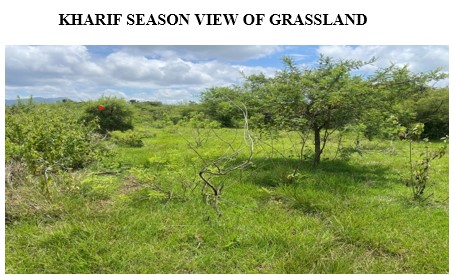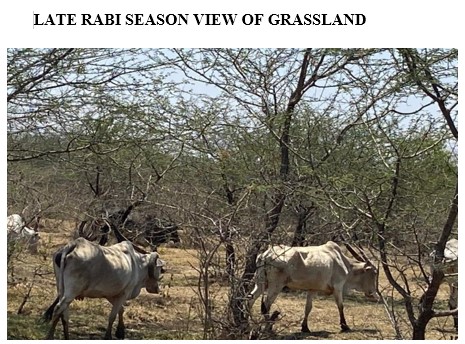November 2025, Jhansi
ICAR–Indian Grassland and Fodder Research Institute, Jhansi, conducted a comprehensive stakeholder consultation to assess the current status and management challenges of the Amrit Mahal Grasslands spread across five districts of Karnataka. Once extending over more than 4 lakh acres at the time of Independence, the grassland area has now declined to approximately 58,000 acres.
The consultation involved officials from the Department of Animal Husbandry and Veterinary Services, the State Forest Department, and livestock farmers from adjoining villages who depend on these grasslands for their livelihoods. Through these interactions, 12 strengths, 9 weaknesses, 5 opportunities, and 6 threats/challenges were identified, providing an empirically grounded understanding of the ecological, institutional, and socio-economic dimensions of this historically significant grazing ecosystem.

The study systematically documented governance and management gaps, establishing an evidence base to guide policy and institutional reforms for participatory and adaptive grassland management. Restoration opportunities such as reseeding with native grasses and legumes, rotational grazing, and weed control were highlighted as effective strategies to improve biomass productivity, soil health, and biodiversity resilience.
Policy-level recommendations, including the introduction of grazing rights, fodder banks, and compensation mechanisms, were also proposed to integrate ecological restoration with rural livelihood enhancement.
At a broader level, the findings emphasized the strategic importance of public grasslands in ensuring fodder security, conserving indigenous livestock breeds, and mitigating land degradation.
Key Findings:
Area Decline: The Amrit Mahal grassland area has reduced from 4 lakh acres (1956) to 58,000 acres at present.
Community Willingness: Strong community acceptance for rotational grazing (55.9%) and controlled grazing (53%) practices was observed.

Policy Support: A positive Policy Support Index (PSI 1.995) indicates community readiness to adopt grassland management practices if supported by safety-net incentives, grazing rights, and compensation.
Perceived Changes: Over the past 20 years, there has been a reported decline in forage availability (59.1%) and palatable species (60.1%), with 41.3% of respondents perceiving significant area shrinkage.
The consultation marks a critical step toward revitalizing Karnataka’s Amrit Mahal grasslands through community-based and scientifically informed management approaches.
(Source: ICAR–Indian Grassland and Fodder Research Institute, Jhansi)







फेसबुक पर लाइक करें
यूट्यूब पर सदस्यता लें
X पर फॉलो करना X
इंस्टाग्राम पर लाइक करें